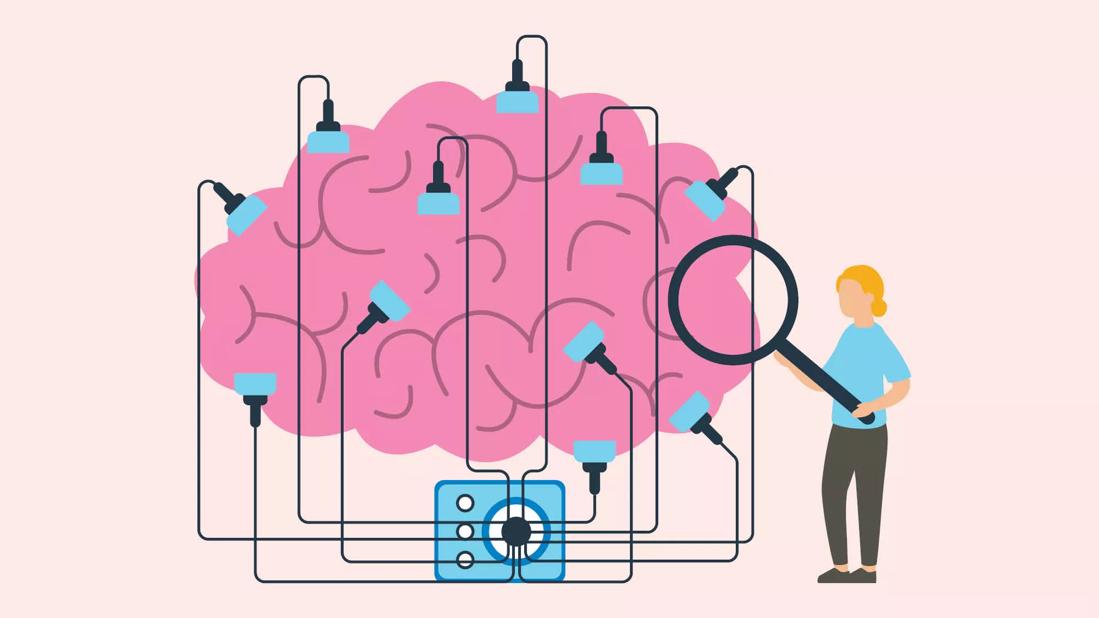Advertisement
You can build mental muscle by challenging your mind and giving it new experiences

Keeping muscles fit and powerful requires hard work. The same concept holds true for your brain, an amazing organ with the ability to change, adapt and get stronger through mental exercise.
Advertisement
Cleveland Clinic is a non-profit academic medical center. Advertising on our site helps support our mission. We do not endorse non-Cleveland Clinic products or services. Policy
”Neuroplasticity“ is the fancy medical term used to describe your brain’s ability to learn and adapt. Think of it as an internal rewiring process that allows your mind to grow and meet new and increased demands.
So, how can you build your brain to flex more mental muscle? Let’s get some cognitive workout tips from psychologist Grace Tworek, PsyD.
Neuroplasticity refers to your brain’s ability to absorb information and evolve to manage new challenges. It’s a natural gift that allows you to develop as a person and take on the ever-changing tasks of daily life.
“Neuroplasticity speaks to the flexibility and adaptability of our brain throughout our life,” explains Dr. Tworek. “It’s how we grow as people.”
So, when you memorize the alphabet as a kiddo, that’s an example of neuroplasticity in action at a young age. Ditto for when you learn how to drive and navigate the streets in your neighborhood.
Even something as simple as remembering the name of a new coworker involves brainwork that falls under the umbrella of neuroplasticity.
Now here’s where things get really nifty: Neuroplasticity actually brings physical changes inside your cranium. In essence, your brain undergoes a sort of rewiring while learning from your experiences.
“Morphological alterations and structural changes occur within our brains,” says Dr. Tworek. “New synaptic connections form between the billions of neurons in your brain as you take in information. It’s a constant process.”
Neuroplasticity explains how we learn by absorbing and analyzing information as we go through life. “It allows us to adapt to new environments and new situations,” says Dr. Tworek.
But neuroplasticity isn’t just about learning new stuff. Your brain’s ability to constantly update and reprogram can also power relearning — a critical need after a stroke or traumatic head injury.
Remember those physical changes behind neuroplasticity? That building process in your head makes it possible for your brain to bypass damaged areas. Those synaptic connections essentially create new pathways to work around injuries.
In many ways, physical therapy and rehabilitation activities after a stroke or head injury look to use the regenerative force of neuroplasticity.
“Your brain begins to adapt and find a way,” notes Dr. Tworek. “How cool is that?”
The functions of learning and relearning serve as the foundation for two different types of neuroplasticity:
A paper published in 2008 laid out 10 principles of neuroplasticity when it comes to optimizing brain function, particularly after sustaining an injury or damage. (Credit for the oft-cited list goes to researchers Jeffrey A. Kleim and Theresa A. Jones.)
The principles are as follows:
Advertisement
Want to make your brain stronger? Then challenge it regularly with new activities and experiences — an endeavor that isn’t nearly as difficult as it might sound.
“You don’t need to travel across the world to find new experiences,” clarifies Dr. Tworek. “Instead, look to build the concept of ‘new experiences’ into your day-to-day life with some simple acts.”
The idea is to break from your routine, even if it’s just slightly. You can do that by:
Advertisement
If you’re feeling really energized, do something completely new and out of the norm to escape your comfort zone. That could involve:
Have fun with the brain-building process of neuroplasticity, too, and don’t worry about how successful you are at your new venture. “It’s the experience that counts,” encourages Dr. Tworek. “Your brain will benefit from that no matter how great you are at this new thing you try.”
Advertisement
Learn more about our editorial process.
Advertisement

Our collective misremembering of events comes from a surplus of false memories

This alternative brain-body therapy focuses on unlocking pent-up feelings, memories and tension that may be stuck in your brain and body

This first-of-its-kind study aims to identify biomarkers of neurological disorders

Different parts are responsible for different things, but you use both sides all the time

A collection of fascinating facts

Behavioral medicine techniques can help ease symptoms

A variety of healthy foods can help reduce inflammation and keep other conditions at bay

Some ‘flare-ups’ are temporary and expected, others can signal a need to change therapies

Focus on your body’s metabolic set point by eating healthy foods, making exercise a part of your routine and reducing stress

PFAS chemicals may make life easier — but they aren’t always so easy on the human body

While there’s little risk in trying this hair care treatment, there isn’t much science to back up the claims